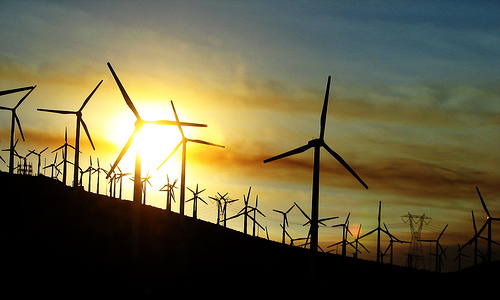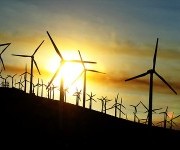 Photo: Vlasta JuricekThe Federal Energy Regulatory Commission (FERC) has ruled that the Bonneville Power Association (BPA) unfairly discriminated against wind turbine owners when it curtailed the production of power from wind assets last spring in response to high hydro production.
Photo: Vlasta JuricekThe Federal Energy Regulatory Commission (FERC) has ruled that the Bonneville Power Association (BPA) unfairly discriminated against wind turbine owners when it curtailed the production of power from wind assets last spring in response to high hydro production.
Wind owners are understandably happy, having argued that BPA was essentially favoring hydro over wind. The technical argument went like this: BPA entered into contracts to sell all of the power available from their generators; if BPA (or any other grid operator) has the ability to unilaterally curtail wind generation, it would reduce the effective value of future wind contracts and limit the ability to finance future wind projects.
Purely as a matter of contract law, it’s hard to argue with FERC’s decision. However, it strikes me that there are bigger issues at stake here than wind, hydro, and BPA — issues that potentially impact all intermittent renewable contracts.
The Pacific Northwest has the highest penetration of renewables of any part of the country. The challenges they face integrating intermittent generators into their system are the challenges that much of the rest of the country will face as renewables continue their market penetration. Specific to BPA:
- There’s a lot of wind installed in the region, but it is extremely unreliable. From a system-planning perspective, BPA cannot afford to presume that the wind resource will be available during system peaks. See this website, updated every five minutes, showing BPA’s total load-serving obligation and the instantaneous output of the hydro, wind, and thermal capacity on the system. For all the value that fuel-free megawatt-hours bring, BPA must maintain generation able to ramp up at a moment’s notice to serve load, which wind cannot do.
- The transmission system is not infinite, so when the total regional generation exceeds total regional demand plus export capacity, something has to be curtailed.
- BPA has fairly limited flexibility to curtail power from hydro. To the extent that reservoirs are not full, they can shut down turbines and let reservoirs fill. However, once reservoirs are full (as occurs in wet springs), fish considerations come into play; they cannot simply spill any excess water over the dam.
- When supply exceeds demand, the price of power falls to a point where it is uneconomic to operate any power plant. In an ideal market, no generator would run in that circumstance, but when many generators are operating under long-term, extra-market contracts (and/or receiving production tax credits in excess of power price that make them marginally profitable even at a slightly negative power price), “irrational” market behavior follows. The potential result is that the grid manager is either forced to “dump” power in resistor banks, or else pay customers to take it — both of which are decidedly suboptimal outcomes.
Put all those pieces together and it’s not surprising that BPA would seek to curtail some wind generation, nor that FERC would look askance at the contractual consequences of such action. My gut tells me that while this may be a near-term victory for wind, it may put an immediate constraint on the execution of new contracts that don’t include explicit curtailment rights. It will be very interesting to watch what follows, especially in light of other parts of the system (like West Texas) that are on a path towards similar physical constraints.




